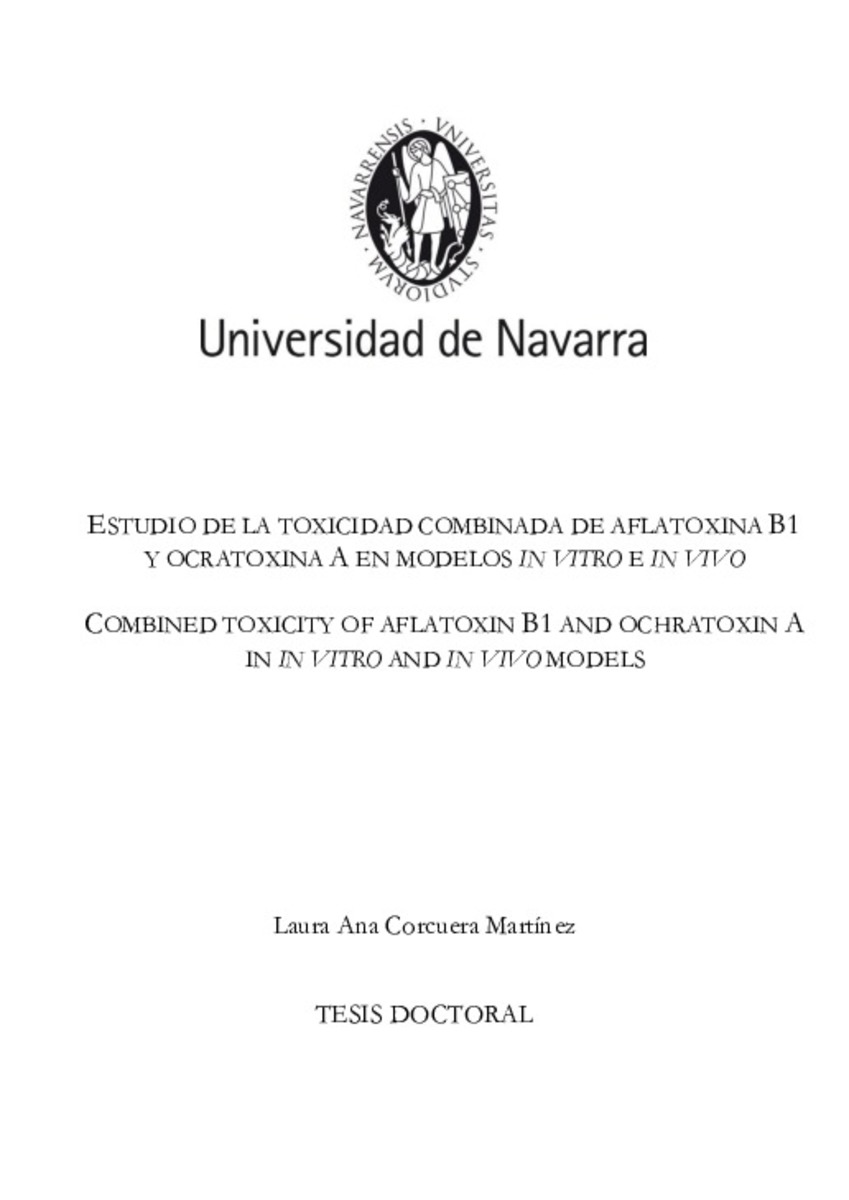Estudio de la toxicidad combinada de aflatoxina B1 y ocratoxina A en modelos "in vitro" e "in vivo"
Otros títulos :
Combined toxicity of aflatoxin B1 and ochratoxin A in "in vitro" and "in vivo" models
Palabras clave :
Materias Investigacion::Farmacia
Genotoxicity
DNA damage
Mycotoxins
Fecha de publicación :
2014
Fecha de la defensa:
30-abr-2012
Editorial :
Servicio de Publicaciones de la Universidad de Navarra
Cita:
CORCUERA, Ana Laura. “Estudio de la toxicidad combinada de aflatoxina B1 y ocratoxina A en modelos ""in vitro"" e ""in vivo"" / Combined toxicity of aflatoxin B1 and ochratoxin A in ""in vitro"" and ""in vivo"" models”. López de Cerain, A. (dir.) y González Peñas, E. (codir.). Tesis doctoral. Universidad de Navarra, Pamplona, 2012
Aparece en las colecciones:
Estadísticas e impacto
0 citas en

0 citas en

Los ítems de Dadun están protegidos por copyright, con todos los derechos reservados, a menos que se indique lo contrario.











